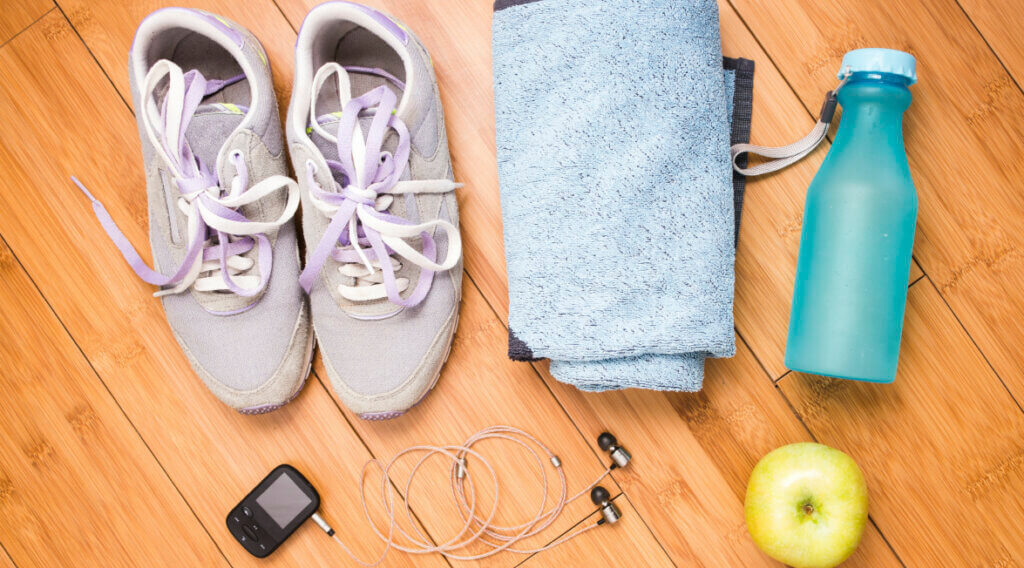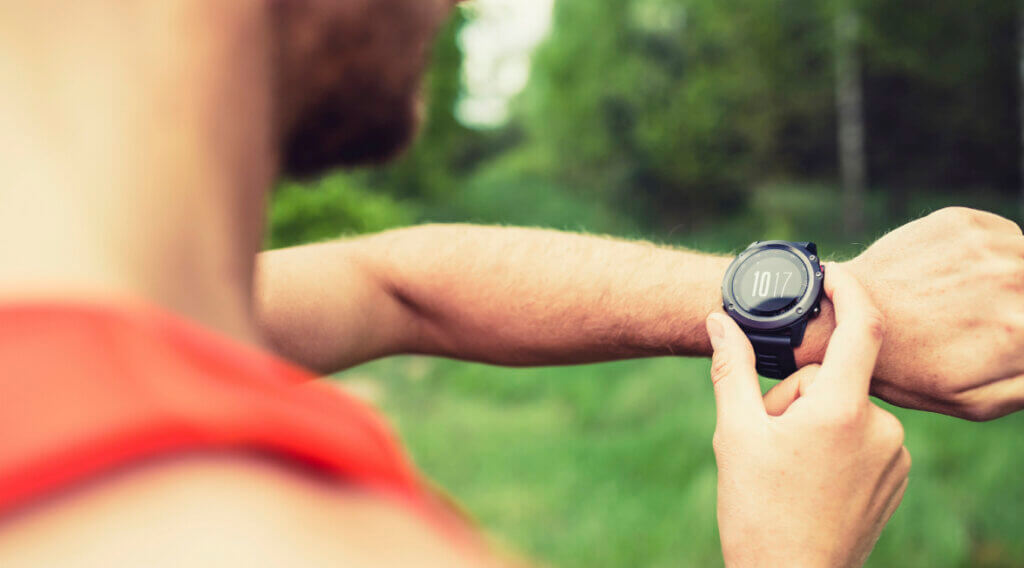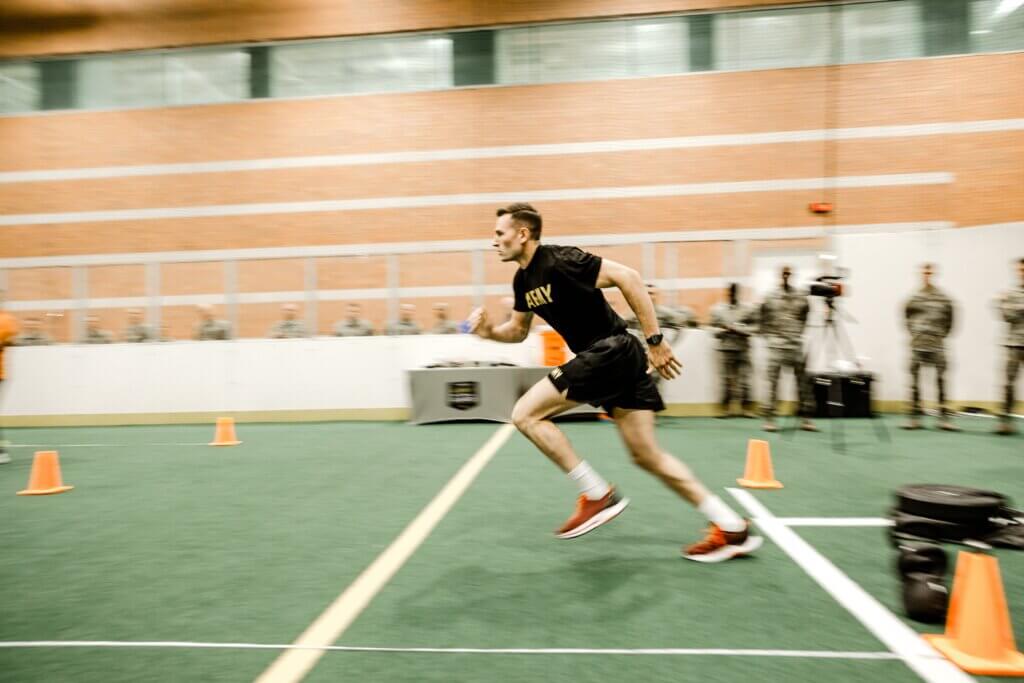For those serious about losing unhealthy weight, regular exercise should become a daily habit. But not all exercise is equal when it comes to helping us rid our bodies of kilograms of unwanted fat.
Among the best exercises for weight loss and improved fitness is running. If you are currently walking and want to take the next step, or if you don’t exercise regularly at all, this article will show you how to make running part of your weight loss routine.
The Pros and Cons of running
As usual, we believe that it’s important to discuss the good and not-so-good aspects of anything we’re discussing on weightloss.com.au before going into the finer details.
Recognising up front that something like taking up running or jogging is not going to be all “champagne and roses” might just help you stick at it if the going gets a little tough because you’ll have realistic expectations before committing yourself.

The Pros
Running has many great aspects which we believe far outweigh any negatives. Here are just a few of the more significant positives of running:
- It burns a lot of calories (600 per hour for a 65kg person and more for heavier individuals).
- It is one of the most effective, time-efficient workouts there are
- It improves your self-esteem
- It strengthens you heart and lungs
- It lowers blood pressure
- It is accessible to almost everyone (all you need is a good pair of runners)
- It helps bring appetite, exercise and food consumption into balance
- It improves sleep and relaxation
- It helps release stress
- Improves brain function
- It provides challenge
- It provides a sense of achievement
- It rewards persistence and tenacity
- It provides a feeling of freedom and thinking time
- It helps strengthen our bones
- It raises HDL (“good”) cholesterol
- It boosts the immune system
- It strengthens and shapes our leg muscles and butt
- It can be fun (once you become fit)
The Cons
Here are some potential negatives of running:
- The effort it takes is sometimes uncomfortable (particularly if we’re unfit)
- Finding the correct pace can be difficult at first (i.e. running too fast)
- It can be affected by the weather (like rain, if you haven’t access to a treadmill)
- It can cause injury (overuse sprains and strains)
- It can be dangerous running at night or on city streets
- You have to stick at it or you’ll quickly lose a lot of the fitness gained
- It can be hard staying motivated until it becomes a habit
The great news is that every one of these negatives can be overcome with the right approach and a little planning.

Before getting started
OK. You’ve decided you’d like to try running to help you lose weight and improve your fitness. Here are a couple of things to do before you ‘hit the road’:
- Have a check up with your doctor to be sure running is the right activity for you.
- Visit a specialist shoe store and buy the right running shoes for you.
- Buy a wrist stop watch with alarm or if you can afford it, a heart rate monitor.
- Build up a base level of fitness before you attempt to jog or run.
Building up a base level of fitness
Building up a base level of fitness will make running a lot easier for you and will help eliminate some of those negative aspects of running listed above.
The best way to build this base is via daily walks of between 20 and 30 minutes. Once you can comfortably walk for 30 minutes or more, start to include short bursts (30 – 60 seconds) of jogging into your walks.
Here’s a twenty week example program (starting from scratch and walking/jogging three to five times per week) that leads to 30 minutes of continuous running:
| Week | Minutes | Activity |
| 1 | 20 | Walk only. |
| 2 | 22 | Walk only. |
| 3 | 24 | Walk (5 minutes) + Jog (30-60 seconds) x 4. |
| 4 | 24 | Walk (5 minutes) + Jog (30-60 seconds) x 4. |
| 5 | 25 | Walk (4 minutes) + Jog (30-60 seconds) x 5. |
| 6 | 25 | Walk (4 minutes) + Jog (30-60 seconds) x 5. |
| 7 | 28 | Walk (3 minutes) + Jog (1 minute) x 7. |
| 8 | 28 | Walk (3 minutes) + Jog (1 minute) x 7. |
| 9 | 30 | Walk (2 minutes) + Jog (1 minute) x 10. |
| 10 | 30 | Walk (2 minutes) + Jog (1 minute) x 10. |
| 11 | 30 | Walk (1 minute) + Jog (2 minutes) x 10. |
| 12 | 30 | Walk (1 minute) + Jog (2 minutes) x 10. |
| 13 | 28 | Walk (1 minute) + Jog (3 minutes) x 7. |
| 14 | 30 | Walk (1 minute) + Jog (4 minutes) x 6. |
| 15 | 30 | Walk (1 minute) + Jog (5 minutes) x 5. |
| 16 | 28 | Walk (1 minute) + Jog (6 minutes) x 4. |
| 17 | 32 | Walk (1 minute) + Jog (7 minutes) x 4. |
| 18 | 27 | Walk (1 minute) + Jog (8 minutes) x 3. |
| 19 | 30 | Walk (1 minute) + Jog (9 minutes) x 3. |
| 20 | 30 | Jog only. |

Remember you can tailor this program to suit your individual needs (for example skip the initial few weeks or progress faster if you already have a base level of fitness, or stick with the same week’s workload for longer if you need to).
Adopt the correct running style
Developing a good running style will allow you to run safely and effectively for longer.
While all of us have a running style and all are unique (running styles are as unique as fingerprints), we should all try to use proper form when running and basically this means:
- Running “tall”, keeping your head level and looking towards the horizon, and avoid bouncing.
- Lean forward slightly from the ankles, not the waist.
- Keeping your shoulders down and relaxed.
- Striking the ground first with your heel, and then roll to the ball of the foot, pushing from the toes.
Running Tips
Here are some general tips that will help insure you get the most out of running:
- Don’t overdo it. The most common reason people give up is running too fast, too often in the beginning.
- Run at an easy and comfortable pace (65 – 75% of your maximum heart rate – not gasping for air and being able to talk while running).
- Always make time for a 5 minute walk warm-up before, and cool-down after a run.
- Stretch between your warm-up and run.
- Don’t count the warm-up or cool-down as part of your workout time or distance.
- Always stretch the leg muscles after your cool-down while they’re still warm.
- Drink water before, during and after your run to stay well hydrated.
- Follow the 10% Rule – never increase your running time or distance by more than 10% over the previous week.
- Never hesitate to walk during your runs.
- If any of your muscles hurt the day after a run, take time off until they feel better.
- Plan your runs and plan your progression.
- Find safe and motivating places to run.
- Map out the best courses in your immediate neighborhood to make the best use of your time.
- Use pain as your guide. A small degree of discomfort is normal, put pain is an absolute no-no.
- To increase speed, increase your stride turnover rather than your stride length.
- On up-hills, shorten your stride, and drive more with the arms. Try to maintain even effort, not pace.
- When running downhill, let gravity work for you by leaning slightly forward.
- Follow hard or long run days with easy or short run days.
- Ease into your runs. Start slowly and build up your speed.
- Wear sun protection, including sunglasses, sunscreen and a peaked cap.
- Breathe normally through your nose and/or mouth.
- If you get a stitch, breathe deeply, concentrating on pushing all of the air out of your abdomen.
- If running with a friend, make sure your running paces are compatible.
- If you must run on the road, face the traffic.
- Always carry money with you for an emergency phone call or bus fare.
- Don’t get tripped-up, double-knot your shoe laces.
- Listen up! Don’t use iPods when running in traffic or other congested areas.
- Tell a friend. Let someone know the route you’re planning to take and how long you’ll be gone.
- Sign up for a fun run or other running event for motivation.
- Smile and have Fun.

Conclusion
For those of us serious about losing unhealthy weight, regular exercise should become a daily habit. But not all exercise is equal when it comes to helping us rid our bodies of kilograms of unwanted fat.
Among the best exercises to help us shed weight fast and improve the strength of our heart and lungs is running. If you are currently walking your way to weight loss and want to take the next step, or if you don’t currently exercise regularly at all, this article has shown you how to make running part of your weight loss exercise routine.
Like any activity, running isn’t for everybody. But if you do decide to give it a go, make sure you take your time, progress slowly and avoid overuse injuries by giving your body a chance to get used to the rigors of running.
And remember, if you really want to, you can do anything!

